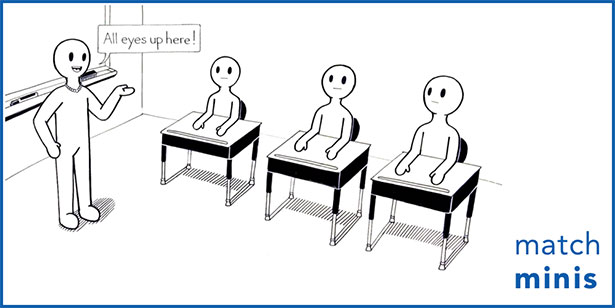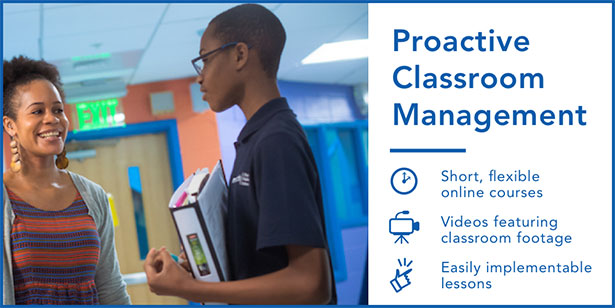Many teachers are resigned to one unfortunate truth: minor misbehavior happens in every classroom. No matter how hard you try, there will always be an unruly student or two to derail your carefully crafted lesson. But what if you could develop a set of moves that would stop disruptive behavior in its tracks?

Proactive classroom management is all about the “behind the scenes,” invisible moves employed by teachers to stop misbehavior before it starts. It all rests on a few key beliefs about management, which a teacher should always keep at the back of her mind.
The teacher is the ultimate authority in the classroom.

Making decisions for other people’s children can feel like a huge and scary responsibility. But a teacher’s job is to drive learning, and that learning won’t happen unless you’re willing to make — and stick to — decisions about classroom expectations.
Students must be meeting expectations 100% of the time.

This principle might feel like overkill, and it can be tempting to want to settle for 90% of students meeting expectations. But that 90% still leaves two or three kids who aren’t learning, and letting their misbehavior slide might send a message to other students that your rules are optional.
But 100% doesn’t mean being a tyrant! It simply means that you expect students to follow directions, notice when they do or when they don’t, and give positive or negative feedback accordingly.
Hold students to expectations from Day 1.

Teaching a school year isn’t a typical marathon. If a teacher isn’t out in front from day 1, it will take a huge amount of effort to escape from small misbehaviors. If you’re constantly playing catchup, you’ll be losing hours of valuable learning time — so be sure to get a head start.
Set a manageable and clear list of non-negotiables.

Proactive management starts with making thoughtful decisions about which expectations you will hold onto firmly. But if you’re demanding 100% compliance on these non-negotiables, be sure to keep the list short: too many rules will force you to divert too much attention from your classroom.
Issue reminders and make it clear that you’re noticing students.

It’s important to ensure that students are fully aware of the expectations that they are being held to. Visual and verbal reminders are a great way to do this. They will also help you cut down on the time spent deciding whether a student is confused about what they’re expected to do, or consciously choosing not to meet an expectation. It’s also helpful to make students noticed by calling out their positive and negative behaviors throughout the lesson.
While our Match Mini is a good introduction to the key principles of keeping a proactive management mentality, there’s still plenty more to learn about how to preemptively curb students’ misbehavior. Check out our online Match Schoolhouse course, Proactive Classroom Management, for a deep dive into the invisible moves that help teachers head off challenging student behaviors!







